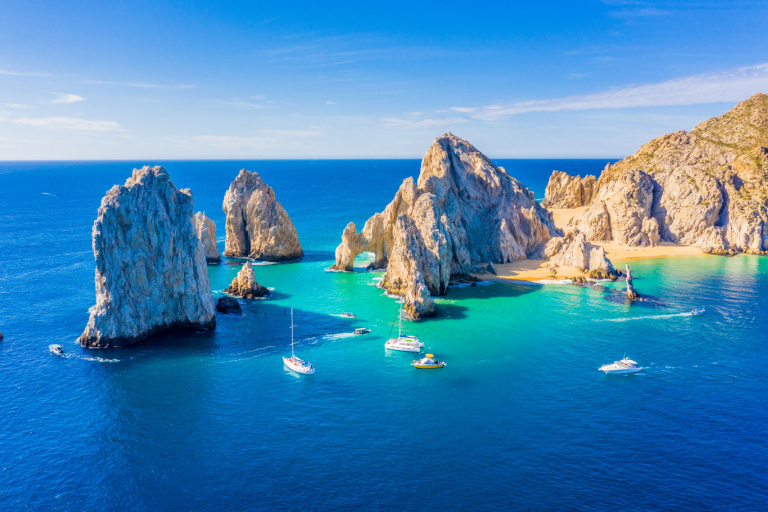 Browse Flights
Browse Flights
Browse Expedia.com’s robust inventory of international and domestic flight deals! We may be compensated when you book after clicking on one of our links.
Flying is the most common and efficient way to reach Cabo San Lucas, with Los Cabos International Airport (SJD) serving as the primary international gateway.
Here’s how to get to Cabo San Lucas by air:
- From the U.S. and Canada: Many cities in the United States and Canada offer direct flights to Los Cabos International Airport. Major airlines like American Airlines, Delta, United, and Air Canada operate regular flights to Cabo San Lucas. Flight durations can vary based on your departure location but typically range from 2 to 5 hours.
- From Europe: If you’re traveling from Europe, you may need to make a stopover in major European hubs like Madrid, London, or Amsterdam before reaching Cabo San Lucas. Airlines like Iberia, British Airways, and KLM offer flights to Los Cabos with varying flight durations, typically ranging from 12 to 16 hours.
- From Asia: Travelers from Asia can catch connecting flights to Cabo San Lucas via major Asian hubs like Tokyo, Beijing, or Seoul. Consider airlines like Japan Airlines, Air China, or Korean Air for connecting to Mexico. Flight durations can vary, with typical total travel times ranging from 18 to 24 hours or more.
- From South America: Cabo San Lucas is accessible from various South American locations, with airlines offering connecting flights from cities like Bogotá, Buenos Aires, and São Paulo. Flight durations depend on your departure location and route but can range from 7 to 12 hours or more.
How Long Is the Flight to Los Cabos?
The average flight time to Los Cabos, Mexico, can vary depending on the departure city, airline, and route. Here are approximate flight times from some of the most common origins:
- Los Angeles, USA: Around 2 to 3 hours
- New York, USA: Approximately 5 to 6 hours
- Mexico City, Mexico: About 2 hours
- Dallas, USA: Around 2.5 hours
- Chicago, USA: Approximately 4 hours
- Toronto, Canada: About 5 to 6 hours (usually with a stopover)
- Vancouver, Canada: Around 4 hours
- London, UK: Approximately 12 to 13 hours (usually with a stopover)
These are estimated times and actual flight durations may vary based on the specific route, stopovers, and other factors. Direct flights might not be available from all locations, necessitating connections through major hubs.





